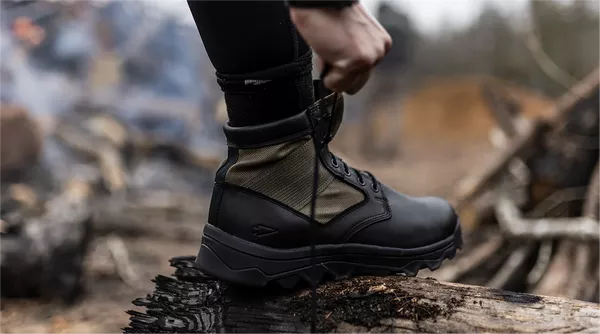In the world of outdoor enthusiasts, the quest for the perfect hiking boot is akin to a holy grail search. With a plethora of options available, each boasting various features and designs, it can be daunting to pinpoint the ideal footwear for traversing rugged terrains. Amidst this diverse landscape, one often overlooked contender for hiking adventures is the humble jungle boot. Originally designed for military use in tropical environments, jungle boots possess unique qualities that make them surprisingly suitable for hiking. In this article, we’ll delve into the characteristics of jungle boots, their advantages and limitations, and why they can be a viable choice for hiking enthusiasts.
Understanding Jungle Boots
Jungle boots were first developed during World War II to address the specific challenges faced by soldiers navigating through dense jungles in tropical climates. These boots typically feature a combination of materials such as canvas, nylon, and leather, offering a balance of durability, breathability, and water resistance. One of the defining features of jungle boots is their unique sole design, which incorporates aggressive tread patterns and drainage vents to provide traction in muddy and wet conditions while allowing water to escape.
Advantages of Jungle Boots for Hiking
Traction in Various Terrain: The rugged sole of jungle boots, with its deep treads and aggressive pattern, provides excellent traction on a variety of surfaces. Whether traversing muddy trails, rocky terrain, or slippery slopes, jungle boots offer stability and grip, reducing the risk of slips and falls.
1. Durability: Built to withstand the harsh conditions of tropical jungles and combat environments, jungle boots are inherently durable. Constructed from sturdy materials such as leather and nylon, they can endure the rigors of extended hikes without succumbing to wear and tear.
2. Breathability: Hiking for long hours can cause excessive sweating, leading to discomfort and blisters. Jungle boots, with their combination of breathable canvas and ventilation ports, allow for adequate airflow, helping to keep feet cool and dry even in hot and humid conditions.
3. Quick Drying: Unlike traditional hiking boots, which may retain moisture and take a long time to dry, jungle boots are designed to expel water rapidly. The drainage vents in the sole allow water to escape, facilitating quicker drying and reducing the risk of fungal infections and discomfort.
4. Lightweight Design: Jungle boots are typically lighter in weight compared to traditional hiking boots, which can be advantageous during long hikes or extended periods of wear. The reduced weight minimizes fatigue and allows for greater agility and maneuverability on the trail.
5. Affordability: While high-end hiking boots can come with a hefty price tag, jungle boots offer a more budget-friendly alternative without compromising on performance. For hikers on a tight budget, jungle boots provide excellent value for money.
Limitations of Jungle Boots for Hiking
1. Lack of Ankle Support: One of the primary drawbacks of jungle boots for hiking is their limited ankle support compared to traditional hiking boots. The low-cut design may leave ankles vulnerable to twists and injuries, especially on uneven or rocky terrain.
2. Less Insulation: Jungle boots are designed for warm and humid environments and may not provide adequate insulation in colder climates. Hikers venturing into sub-zero temperatures or snowy conditions may find jungle boots insufficient for keeping their feet warm.
3. Minimal Cushioning: While jungle boots offer durability and traction, they may lack the plush cushioning found in some hiking boots. This could result in less shock absorption and increased fatigue, particularly on longer hikes or rough terrain.
4. Breaking-in Period: Like any new footwear, jungle boots may require a breaking-in period during which they can feel stiff or uncomfortable. Hikers should allow sufficient time to wear them in before embarking on extended hiking trips to prevent blisters and discomfort.
Conclusion
While jungle boots may not be the first choice for many hikers, they offer a compelling set of advantages that make them worthy contenders for outdoor adventures. With their exceptional traction, durability, breathability, and quick-drying properties, jungle boots excel in navigating diverse terrains and challenging conditions. However, it’s essential to consider their limitations, such as reduced ankle support and minimal insulation, before choosing them for hiking expeditions. Ultimately, the suitability of jungle boots for hiking depends on individual preferences, the intended terrain, and the prevailing weather conditions. For those seeking an affordable and versatile footwear option for their hiking endeavors, jungle boots deserve serious consideration.

